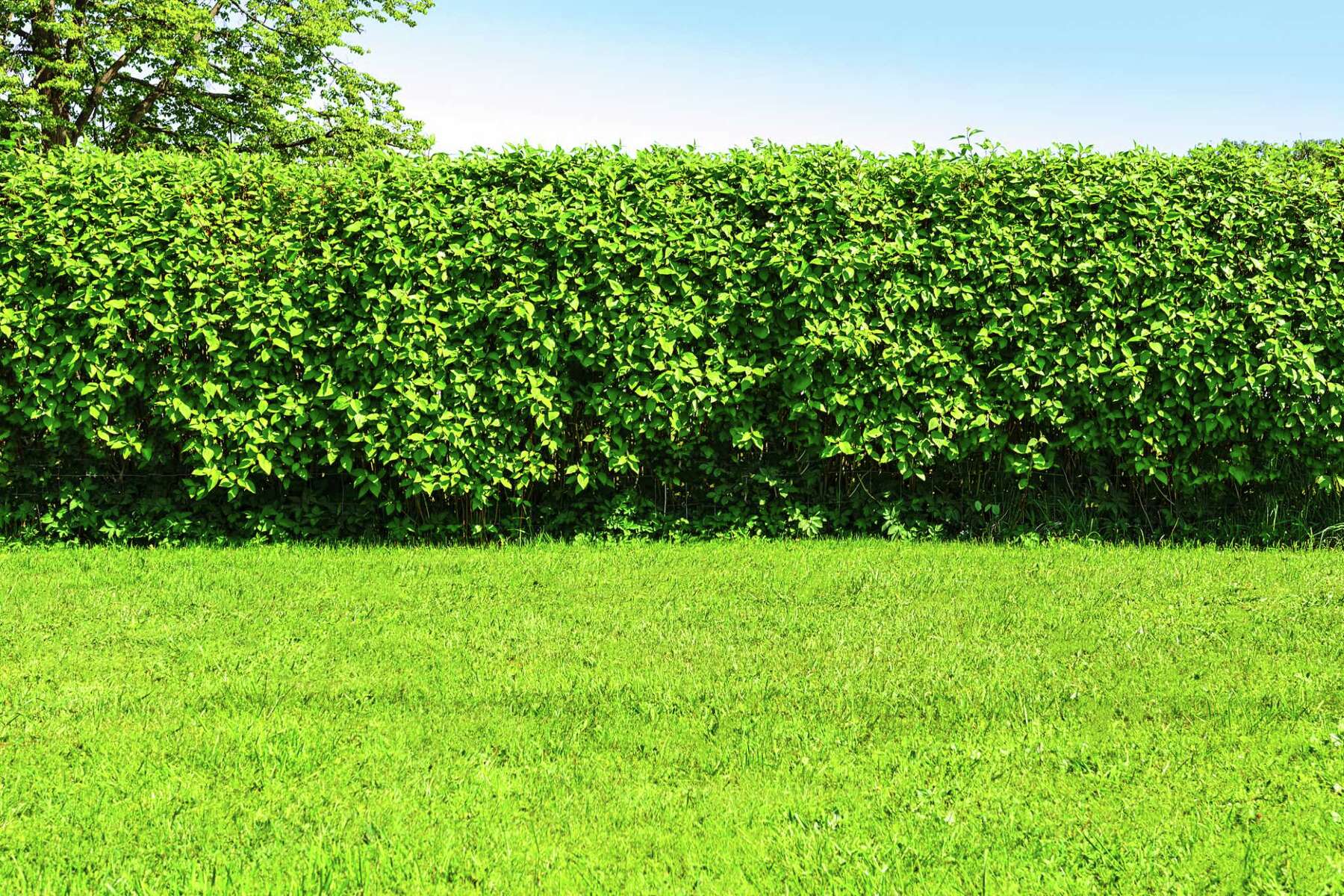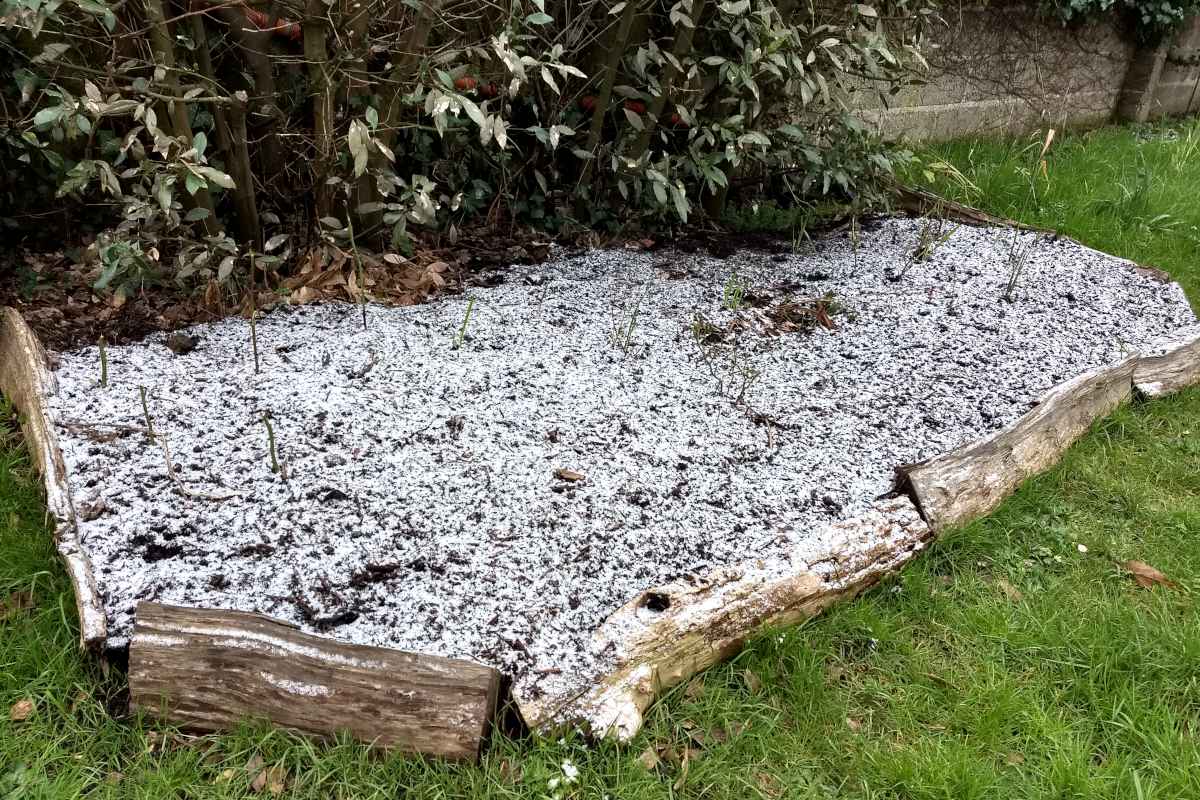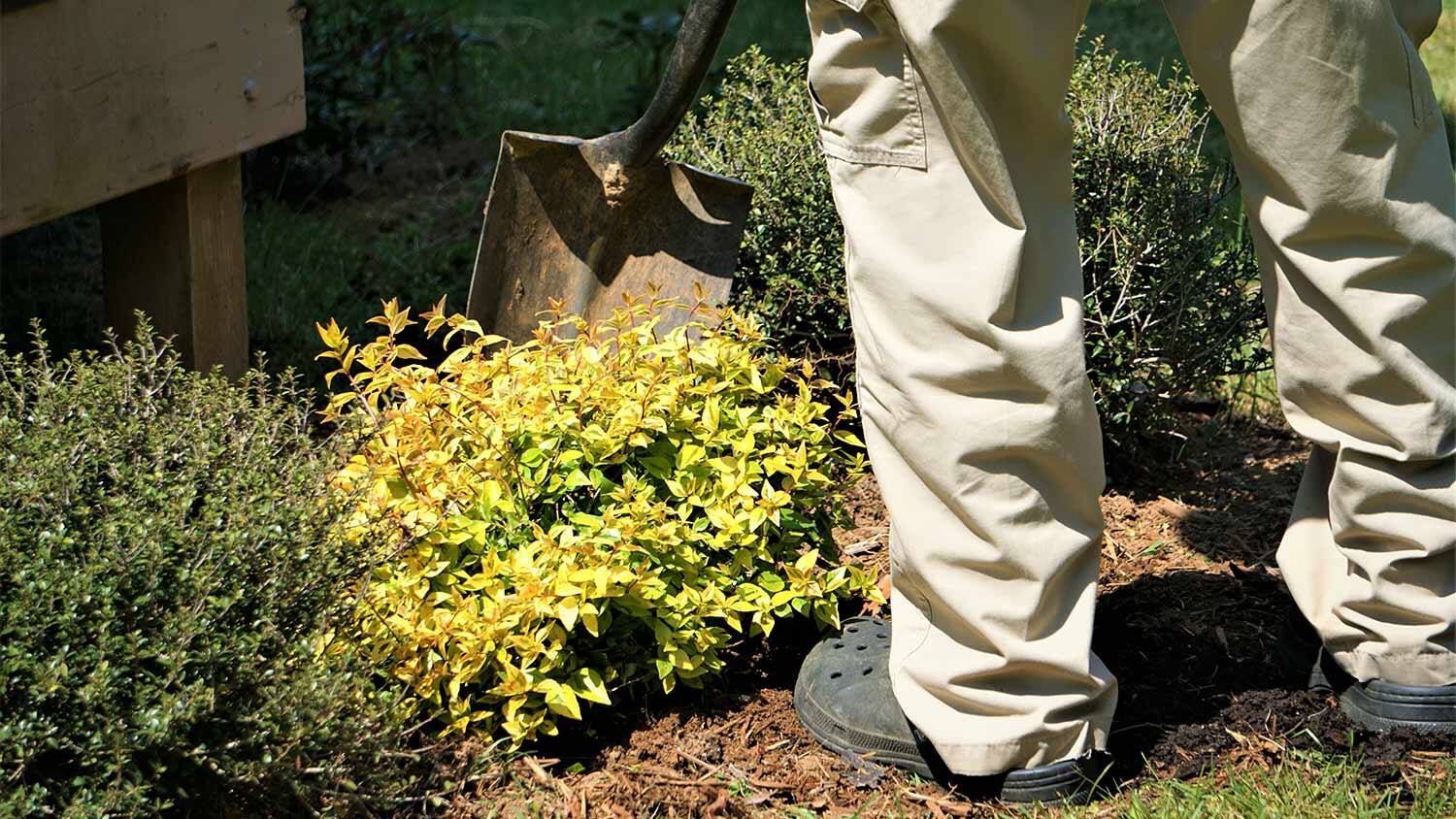Home>Gardening Techniques>DIY Projects>How To Shape Topiary Shrubs


DIY Projects
How To Shape Topiary Shrubs
Modified: January 22, 2024
Learn how to shape topiary shrubs with this easy DIY project guide. Transform your garden with these simple techniques.
(Many of the links in this article redirect to a specific reviewed product. Your purchase of these products through affiliate links helps to generate commission for Chicagolandgardening.com, at no extra cost. Learn more)
Table of Contents
Introduction
There’s something enchanting about a well-maintained topiary shrub – those meticulously shaped plants that add a touch of artistry to any garden or landscape. With their perfectly trimmed forms, they can transform an ordinary yard into a living work of art. However, achieving those striking shapes requires some knowledge and skill in the art of topiary. But fear not, as we’re here to guide you through the process of shaping topiary shrubs with our comprehensive DIY guide.
Imagine the satisfaction of creating your own unique topiary designs from scratch. You’ll have full control over the size, shape, and style of your topiaries, allowing you to customize them to match your personal taste and the overall aesthetic of your garden. Whether you’re a beginner or have some experience in gardening, we will provide you with step-by-step instructions and tips to help you master the art of topiary shaping.
In this guide, we’ll explore the materials you’ll need, how to choose the right shrubs for topiary, the basic tools required for shaping, and the key steps involved in creating and maintaining beautiful topiary designs. We’ll also address common issues that may arise during the shaping process and provide troubleshooting tips to overcome them.
By the end of this guide, you’ll be equipped with the knowledge and skills necessary to transform ordinary shrubs into stunning topiaries that will impress friends and neighbors alike. So, let’s get started on this delightful journey of shaping topiary shrubs and unleash your creativity in the world of gardening!
Materials Needed
Before you embark on your topiary shaping adventure, it’s essential to gather the necessary materials. Having everything at hand will ensure a smooth and efficient process. Here are the materials you’ll need for shaping topiary shrubs:
- Pruning Shears: These are the backbone of your topiary toolkit. Invest in a pair of high-quality pruning shears that are sharp and comfortable to hold. Look for ones with a bypass design for cleaner cuts on live branches.
- Hedge Trimmers: To shape larger shrubs or to maintain a uniform height, a set of hedge trimmers will come in handy. Choose ones with adjustable blades and a comfortable grip.
- Lopping Shears: Lopping shears are ideal for thicker branches that are too large for pruning shears. Make sure they have a sharp blade and a long handle for added leverage.
- String or Wire: When planning your topiary design, you may need to create guides or templates. Using string or wire helps in shaping and maintaining symmetry.
- Stakes: For more intricate designs, stakes are useful for providing support and structure to the shrub as it grows. Choose sturdy stakes that can withstand the elements.
- Gardening Gloves: Protect your hands from scratches and blisters with a good pair of gardening gloves. Opt for gloves that offer flexibility and a good grip.
- Measuring Tape: Precision is key in topiary shaping. A measuring tape will help you ensure accuracy and symmetry in your designs.
- Watering Can or Hose: Adequate watering is crucial for the health of your topiary shrubs. Ensure a steady supply of water by having a watering can or hose nearby.
- Fertilizer: Provide essential nutrients to your shrubs by using a suitable fertilizer. Consult a gardening expert to determine the right type and application frequency.
Gathering these materials before you start shaping your topiary shrubs will make the process more efficient and enjoyable. With everything in place, you’ll be ready to delve into the art of topiary shaping and create stunning masterpieces!
Choosing the Right Shrubs
When it comes to topiary, selecting the right shrubs is crucial. Not all plants are suitable for shaping, so it’s important to choose ones that are well-suited for topiary work. Here are some factors to consider when selecting shrubs for your topiary projects:
- Growth Rate: Look for shrubs with moderate to fast growth rates. This will ensure that your topiary shapes fill out relatively quickly, reducing the time it takes to achieve your desired form.
- Density: Shrubs with dense foliage are ideal for topiary, as they allow for the creation of defined and compact shapes. Consider plants with naturally bushy or tightly packed leaves for the best results.
- Tolerance to Pruning: Some shrubs handle pruning and shaping better than others. Choose varieties that are known to tolerate regular pruning without experiencing adverse effects on their overall health and growth.
- Size: Take into account the available space in your garden or landscape when selecting shrubs. Choose varieties that are proportionate to the area and can be easily shaped to fit the desired design.
- Hardiness: Consider the climate conditions in your area and select shrubs that are well-suited to the local climate. This will ensure the long-term health and survival of your topiary plants.
- Aesthetic Appeal: Choose shrubs that have a pleasing visual appearance, both in their natural form and when shaped into topiaries. Look for interesting leaf colors, textures, or unique growth patterns that will add visual interest to your designs.
Some popular shrubs that are commonly used for topiary include Boxwood, Privet, Yew, Holly, and Rosemary. However, there are many other options available, so do your research and find the ones that best suit your needs and preferences.
Remember, patience is key when shaping topiary shrubs, as it can take months or even years for them to reach their full form. Choose shrubs that you are passionate about and enjoy working with, and before you know it, you’ll be gazing at your own stunning topiary creations!
Basic Tools for Shaping
To create beautifully shaped topiary shrubs, you’ll need a few basic tools that will help you achieve precise cuts and maintain the desired form. Here are the essential tools for shaping topiary:
- Pruning Shears: Pruning shears are a must-have tool for topiary shaping. They allow you to make clean and precise cuts on small branches and foliage. Look for a high-quality pair with sharp blades and a comfortable grip.
- Hedge Trimmers: Hedge trimmers are ideal for shaping larger shrubs and maintaining an even height. Opt for a pair with adjustable blades and a sturdy construction for smooth and effortless trimming.
- Topiary Shears: These specialized shears are designed specifically for topiary work. With long, thin blades and a lightweight design, they allow for intricate and detailed shaping. Invest in a pair with a soft-grip handle for added comfort.
- Lopping Shears: Lopping shears come in handy when dealing with thicker branches that are too large for pruning shears. They have longer handles and powerful cutting blades, providing the necessary leverage for efficient trimming.
- String or Wire: String or wire can be used to create temporary guides or templates to help shape your topiary. They are especially useful for maintaining symmetry and achieving uniform shapes.
- Stakes: For more complex and intricate topiary designs, stakes can provide extra support and structure for the growing shrub. Choose sturdy and durable stakes that can withstand the weight of the foliage.
- Measuring Tape: Precision is important in topiary shaping, and a measuring tape will help you ensure accurate proportions and symmetry in your designs.
- Gloves: Protect your hands from scratches and blisters with a pair of gardening gloves. Choose gloves that offer flexibility and a good grip, allowing for better control when handling the tools.
Having these basic tools in your arsenal will set you up for success in shaping topiary shrubs. Remember to keep your tools clean and well-maintained to ensure optimal performance and longevity. With the right tools in hand, you’ll be ready to unleash your creativity and sculpt stunning topiary designs!
Step 1: Planning the Design
The first step in shaping topiary shrubs is to plan the design you want to achieve. Planning is crucial as it sets the foundation for creating a visually appealing and well-balanced topiary. Here are the key factors to consider during the planning phase:
- Choose a Style: Decide on the style of topiary you want to create. There are numerous options to choose from, including geometric shapes like spheres or cones, animal figures, or abstract designs. Consider the overall theme of your garden and your personal preference when selecting a style.
- Consider the Shrub’s Natural Form: Take into account the natural shape and growth pattern of the shrub you’re working with. Some shrubs have a more upright growth habit, while others may have a more rounded or cascading form. Work with the natural tendencies of the shrub during shaping to create a harmonious and organic-looking topiary.
- Outline the Design: Use string or wire to create a rough outline of your desired design. This outline will serve as a guide during the shaping process and help you maintain symmetry and proportion.
- Think about Scale: Consider the size and location of your topiary in relation to its surroundings. A large and elaborate design might overpower a small garden, while a small and intricate design may get lost in a large landscape. Ensure that the scale of the topiary is appropriate for its setting.
- Ponder on Maintenance: Reflect on the amount of time and effort you’re willing to invest in maintaining the shape of your topiary. Complex designs may require more frequent pruning and shaping, while simpler shapes can be easier to maintain.
Once you have a clear plan in mind, it’s time to move on to the next step: actual pruning and shaping of the shrub. Remember, designing and shaping topiaries is a creative process, so don’t be afraid to experiment and explore your artistic side. Embrace the uniqueness of each topiary project and let your creativity shine through!
Step 2: Pruning Techniques
Once you have planned the design for your topiary shrub, it’s time to put your pruning techniques into action. Proper pruning is essential for achieving the desired shape and maintaining the health of the plant. Here are some key pruning techniques to consider:
- Cutting Techniques: Start by removing any dead, damaged, or diseased branches. Use clean and sharp pruning shears to make precise and clean cuts. Avoid tearing or ripping the branches, as this can lead to damage and disease. Make cuts at a slight angle, just above a leaf or bud, to promote new growth.
- Shearing Techniques: For shaping larger areas or creating uniform shapes, hedge trimmers are useful. Hold the trimmers parallel to the surface of the shrub and make even and straight cuts. Take care not to cut too deeply into the foliage, as it may cause stress to the plant.
- Fine Detailing: For intricate designs and fine detailing, use topiary shears. These specialized shears allow for more precise and controlled trimming. Take your time with detailed areas, making small and deliberate cuts to achieve the desired shape.
- Thinning and Shaping: Thinning is the process of selectively removing branches to improve air circulation and light penetration within the shrub. It helps maintain overall health and encourages dense foliage. Shape the shrub by gradually pruning and shaping it according to the predetermined design.
- Step Back and Assess: Periodically step back and assess your progress. Evaluate the overall shape of the topiary from different angles to ensure that it is symmetrical and balanced. Make any necessary adjustments as you go along.
- Ongoing Maintenance: Regular maintenance is crucial to keep your topiary in its desired shape. Trim back any new growth that obscures the design and maintain the overall form of the shrub by pruning as needed. Always use clean and sharp tools to avoid spreading diseases.
Pruning can be both an art and a science, so don’t be afraid to experiment and make adjustments as you go. It may take time and practice to master the pruning techniques, but with patience and dedication, you’ll be able to create stunningly shaped topiaries that will be the envy of any garden.
Step 3: Maintaining the Shape
After putting in the effort to shape your topiary shrub, it’s important to maintain its form to ensure its longevity and visual impact. Regular maintenance will help keep the shape intact and the shrub healthy. Here are important steps to follow for maintaining the shape of your topiary:
- Regular Pruning: Prune your topiary regularly to keep it in shape. Remove any new growth that deviates from the design and trim back branches that may be encroaching on other areas. Use your pruning shears or topiary shears to make precise and clean cuts.
- Monitor Growth: Keep an eye on the growth rate of your topiary shrub. Some fast-growing species may require more frequent pruning and shaping compared to slower-growing ones. Adjust your maintenance schedule accordingly to prevent the shrub from losing its defined shape.
- Watering and Fertilization: Provide adequate watering to your topiary shrub, especially during periods of drought or hot weather. Make sure the soil is consistently moist but not waterlogged. Additionally, fertilize the shrub according to its specific needs to promote healthy growth and vibrant foliage.
- Weed Control: Regularly remove any weeds or unwanted plants that may compete with your topiary shrub for nutrients and water. Keep the area around the shrub clean to reduce the risk of disease or pests. Mulching can also help in weed suppression and moisture retention.
- Support and Training: For intricate and delicate designs, use stakes or wire frames to provide support and maintain the desired shape. Adjust the stakes or wires as the shrub grows to ensure it follows the desired form. This will help the shrub maintain its structure and prevent the branches from bending or sagging.
- Regular Assessments: Step back and assess your topiary from different angles regularly to ensure it is maintaining its intended shape and symmetry. Look for any areas that need pruning or potential issues that require attention.
Maintaining the shape of your topiary shrub is an ongoing process that requires consistency and attention. By implementing these maintenance practices, you’ll be able to enjoy the beauty of your meticulously shaped topiary for years to come.
Troubleshooting Common Issues
While shaping and maintaining topiary shrubs can be a rewarding endeavor, it’s not without its challenges. Common issues may arise during the process, but with careful attention and timely intervention, you can overcome them. Here are some common issues you may encounter when shaping topiary and how to troubleshoot them:
- Uneven Growth: If you notice uneven growth on your topiary shrub, it may be due to factors such as inadequate sunlight, poor soil conditions, or improper pruning techniques. Ensure that the shrub receives sufficient sunlight, amend the soil if necessary, and follow proper pruning practices to promote even growth.
- Branch Dieback: Branch dieback can occur due to pests, diseases, or environmental stress. Regularly inspect your topiary for signs of pests or diseases, and take appropriate measures to control them. Ensure the plant is receiving proper care, including adequate watering, fertilization, and protection from extreme weather conditions.
- Shape Distortion: Over time, the shape of a topiary shrub may become distorted due to unchecked growth or improper pruning. To correct shape distortion, carefully assess the areas that need adjustment and make precise cuts to restore the desired form. It may take gradual pruning sessions to reshape the shrub back to its intended design.
- Leaf Browning or Yellowing: Leaf browning or yellowing can be a sign of various issues, such as nutrient deficiencies, overwatering, or pests. Conduct a soil test to identify any nutrient deficiencies and make appropriate adjustments. Adjust your watering schedule to prevent overwatering. Inspect the shrub for signs of pests and take necessary pest control measures.
- Excessive Growth: Some shrubs have a tendency to grow vigorously, requiring more frequent pruning and maintenance. If you find that your topiary shrub is experiencing excessive growth, increase the frequency of pruning sessions and adjust your maintenance routine accordingly to prevent the shrub from losing its shape.
- Winter Protection: During colder months, topiary shrubs may require protection from freezing temperatures and harsh weather conditions. Consider wrapping the shrub with burlap or applying a layer of mulch around the base to insulate the roots. This will help prevent damage and ensure the shrub’s survival.
Remember, troubleshooting common issues in topiary shaping requires careful observation and timely action. Regular monitoring and proper plant care will go a long way in preventing and addressing any issues that may arise along the way.
Conclusion
Shaping topiary shrubs is an artform that allows you to create stunning and unique living sculptures in your garden or landscape. With the right materials, tools, and techniques, anyone can master the skill of topiary shaping. By following the step-by-step process of planning the design, implementing proper pruning techniques, and maintaining the shape, you can create beautifully sculpted topiaries that will be the centerpiece of your outdoor space.
Remember, choosing the right shrubs that are well-suited for shaping, using the appropriate tools, and regularly maintaining the form are key to successful topiary projects. Take the time to plan your design, considering the natural growth pattern of the shrub and the overall scale and style you desire. By implementing proper pruning techniques, such as precise cutting, shearing, and detail work, you can achieve the desired shape with finesse.
Regular maintenance is crucial to preserve the shape of your topiaries. Monitor growth, water and fertilize appropriately, and troubleshoot common issues that may arise, such as uneven growth or shape distortion. With dedication and attention to detail, you can overcome challenges and keep your topiaries thriving year after year.
So, why not unleash your creativity and embark on a topiary shaping journey? Explore different styles, experiment with new designs, and transform your garden into a living work of art. With passion, patience, and a keen eye for detail, you’ll be able to create beautifully shaped topiaries that will inspire admiration and awe from all who behold them.










